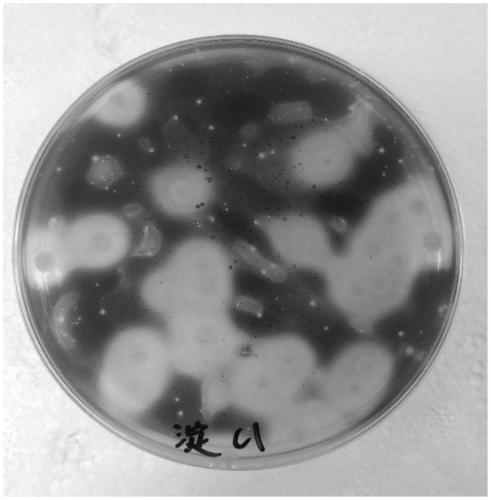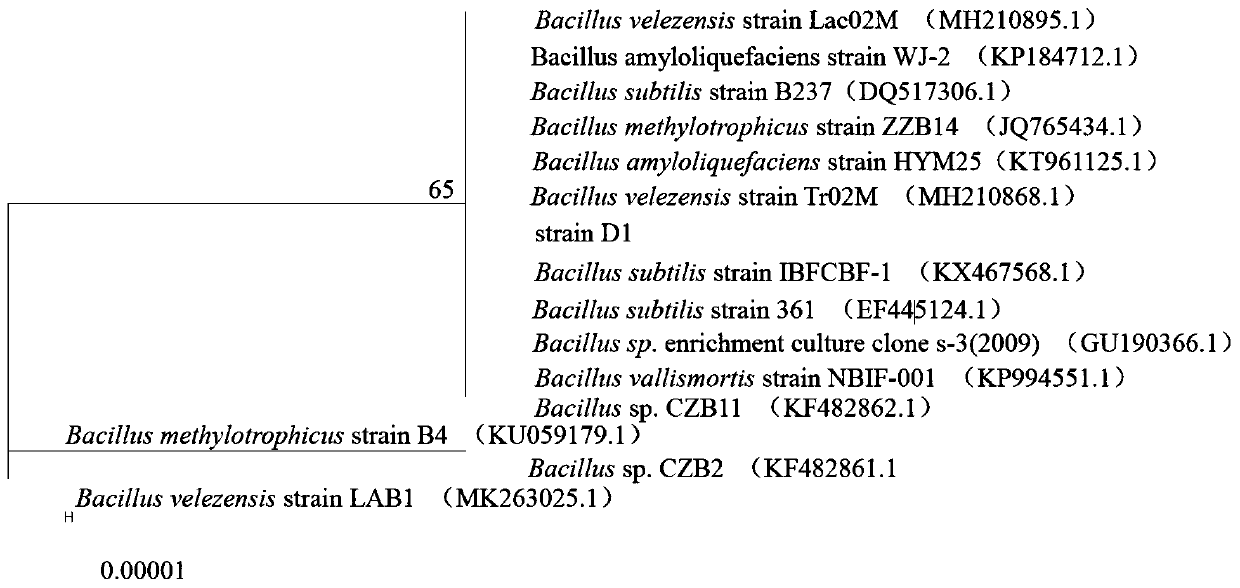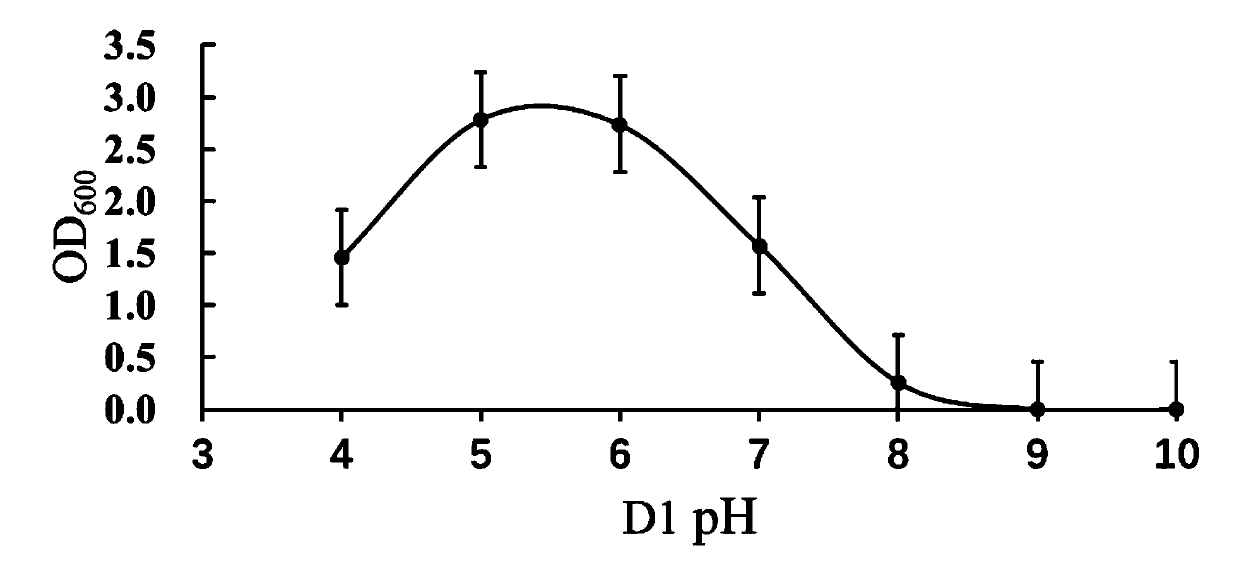Bacillus velezensis D1 with function of efficiently degrading feed starches in aquaculture water body and application of bacillus velezensis D1
A Bacillus, aquaculture technology, applied in the field of microorganisms, can solve problems such as environmental pollution, large economic losses, and accumulation of residual bait
- Summary
- Abstract
- Description
- Claims
- Application Information
AI Technical Summary
Problems solved by technology
Method used
Image
Examples
Embodiment 1
[0022] Example 1 Enrichment and Screening of Bacillus Velez D1 That Can Extracellularly Secrete Amylase
[0023] Sample source: Litopenaeus vannamei aquaculture water body in intelligent mariculture room of South China Sea Institute of Oceanology, Chinese Academy of Sciences.
[0024] The specific implementation steps are as follows: select healthy prawns with large vitality and full digestive tract in the prawn breeding pond, and bring them back to the laboratory immediately. The remaining seawater on the surface of the prawns was absorbed by filter paper, the body surface was wiped with 75% v / v alcohol for disinfection, dissected under aseptic conditions, and the complete intestinal tract was taken out. Rinse the intestinal tissue with sterile PBS (pH=7.4) buffer solution for 3 to 4 times, then put it into a 1.5mL sterile EP tube, add 1mL of PBS buffer solution to the sterile EP tube, and grind it evenly with a sterile grinding rod. Bacterial suspension was prepared by 10-f...
Embodiment 2
[0026] The identification of embodiment 2 Veles bacillus D1 bacterial classification
[0027] 1. Morphological observation
[0028] The purely cultured D1 strain was inoculated on the surface of 2216E solid medium by streaking method, and cultured in a 30°C incubator for 24 hours to observe the morphological characteristics of the colony. The bacterial colony is small and grows slowly on 2216E solid medium. The colony is dot-shaped, white and opaque, with rough edges, and the colony is relatively dry.
[0029] The 2216E solid medium is prepared by adding agar powder with a mass fraction of 1.5% to the 2216E liquid medium components, mixing and sterilizing. The 2216E liquid medium contains 5g of peptone per liter, 1g of yeast extract powder, 0.1g of ferric citrate, 19.45g of sodium chloride, 5.98g of magnesium chloride, 3.24g of sodium sulfate, 1.8g of calcium chloride, and 0.55g of potassium chloride , sodium carbonate 0.16g, potassium bromide 0.08g, strontium chloride 0.034...
Embodiment 3
[0040] Example 3 The Exploration of the Optimum Growth Conditions of Bacillus Velez D1
[0041] The effects of different pH, temperature and NaCl mass fraction (salinity) on the growth of Bacillus Velez D1 were studied respectively. Among them, the different temperatures are: 20°C, 25°C, 30°C, 37°C, 43°C; the different pH values are: 4.0, 5.0, 6.0, 7.0, 8.0, 9.0, 10.0; the different NaCl mass fractions are: 0 %, 1%, 2%, 3%, 4%, 5%.
[0042] In the above experiments, except for the investigation factors, the fermentation conditions were to inoculate the Bacillus veleus D1 culture solution in the LB fermentation medium with an inoculation amount of 1% (v / v), cultivate it at 30°C and 200rpm for 24h, and then take a sample Determination of OD for each condition 600 Value, the LB fermentation medium without inoculation was used as blank control. Take culture temperature, pH value, NaCl mass fraction as abscissa, OD 600 Values plot the respective curves on the ordinate. see...
PUM
 Login to View More
Login to View More Abstract
Description
Claims
Application Information
 Login to View More
Login to View More - R&D
- Intellectual Property
- Life Sciences
- Materials
- Tech Scout
- Unparalleled Data Quality
- Higher Quality Content
- 60% Fewer Hallucinations
Browse by: Latest US Patents, China's latest patents, Technical Efficacy Thesaurus, Application Domain, Technology Topic, Popular Technical Reports.
© 2025 PatSnap. All rights reserved.Legal|Privacy policy|Modern Slavery Act Transparency Statement|Sitemap|About US| Contact US: help@patsnap.com



